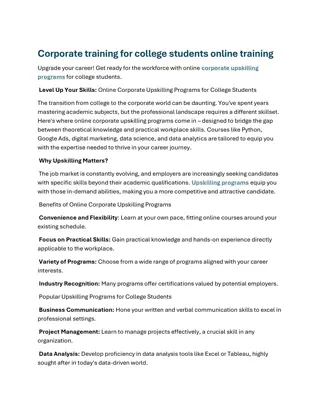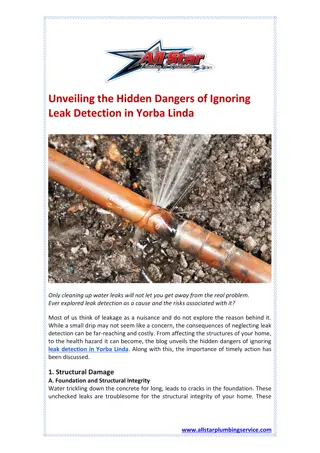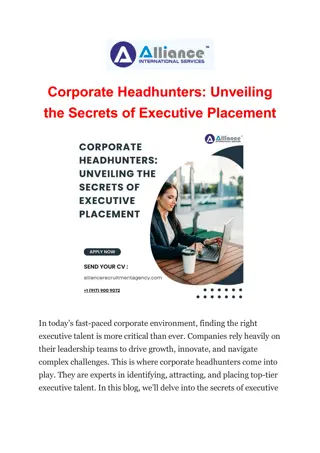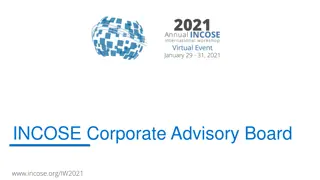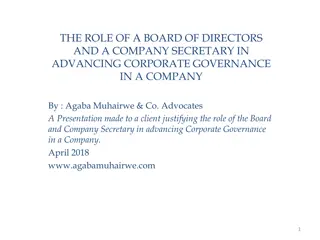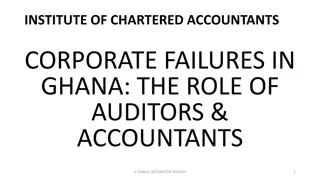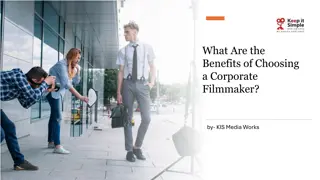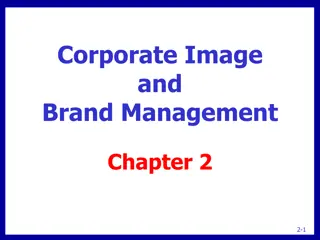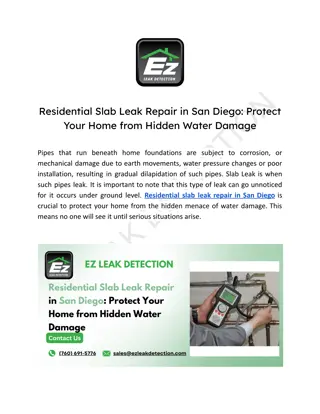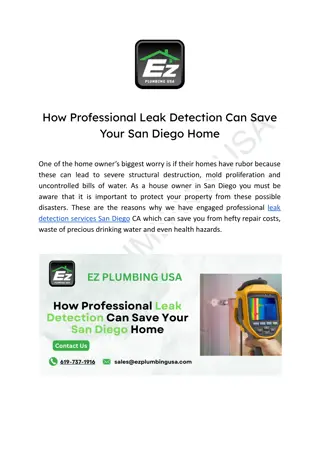Unveiling Corporate Irresponsibility: Consequences, Detection, and Management
Exploring the facets of corporate irresponsibility, this content delves into attributing wrongdoing, consequences faced, and the importance of preventing and detecting misconduct in organizations. It sheds light on how firms like Amazon engage in questionable practices, the role of internal and external intervention in detecting wrongdoing, and the nuances of whistleblowing in the corporate world.
Download Presentation

Please find below an Image/Link to download the presentation.
The content on the website is provided AS IS for your information and personal use only. It may not be sold, licensed, or shared on other websites without obtaining consent from the author.If you encounter any issues during the download, it is possible that the publisher has removed the file from their server.
You are allowed to download the files provided on this website for personal or commercial use, subject to the condition that they are used lawfully. All files are the property of their respective owners.
The content on the website is provided AS IS for your information and personal use only. It may not be sold, licensed, or shared on other websites without obtaining consent from the author.
E N D
Presentation Transcript
Corporate irresponsibility Consequences and management Jukka Rintam ki
Attributing wrongdoing: How do we figure out what is wrongdoing and attribute it? Harm Attention Attribution The extent of harm Culpability of the firm (Non)complicity of the affected parties Let s look at a few things Amazon does
Attributing wrongdoing: Amazon Takes 50% of each sale from its merchants All junk fees etc. put together Made $130b from this alone in 2022 Routinely engages in (prolonged) predatory pricing Copies its merchants most profitable items and puts it first in search Merchants aren t allowed to sell for cheaper elsewhere Refuses to disclose financial information dictated by regulators (SEC) Does not break out profits/losses per segment Pushes down best deals in customer searches Making $38b per year from this
Getting caught Consequences of irresponsibility Agenda Recap Lecture assignment
Preventing irresponsibility is very important (duh) However, all irresponsibility can never be prevented Detecting and correcting wrongdoing is just as important as prevention How firms get caught
External intervention Regulatory control Journalists, researchers Watchdog organizations (e.g. Finnwatch in Finland, the likes of Greenpeace, Amnesty ) How firms get caught Internal intervention Whistleblowing 15-25% of corporate fraud cases are detected and brought forward by employees Source: Dyck et al., 2010
Most employees who detect wrongdoing do not blow the whistle, nor do they take the case to court Most organizations do not welcome reports of wrongdoing (i.e. whistleblowing) Two categories of whistleblowing: Internal whistleblowing: make a non-public intervention within the firm s chain of command Less risky for employee, consequences for firm less likely External whistleblowing: step outside, make a public intervention, e.g. contacting the press or regulators More risky for employee (long legal process etc.), consequences for firm more likely Whistleblowing Sources: Kaptein, 2011; Kenny, 2017; Kenny et al., 2018
Institutional support for whistleblowing improved Qui tam laws (US): private citizens allowed to file civil lawsuits against firms on behalf of the federal government Whistleblowers get considerable compensation (up to 30% of the fine/settlement in the US) Whistleblowing Still relatively little incentive for whistleblowing Long, arduous, stressful process Likely to get fired with no future in the industry Stigmatization will typically follow Career change ahead Some regulators, like the SEC in the US, provide career change services following whistleblowing Sources: Kaptein, 2011; Kenny, 2018; Kenny et al., 2020
The consequences to being the whistleblower include distancing and retaliation from fellow workers and friends, personal attacks on one s character during the course of a protracted dispute, and the need to change one s career. (Dyck et al., 2010)
Consequences and management of wrongdoing
Impacts of wrongdoing on perpetrator Many (most?) are never caught Fines, prolonged court battles financial penalties Short-term legitimacy struggles: discursive struggles in media Reputational penalties inconsistent Firms associated with irresponsibility have slightly better reputational scores than those not associated with it Firms associated with environmental irresponsibility have better reputations than firms that do not Exception: diversity-related irresponsibility tends to lead to reputation penalties! Sometimes, in some industries, stock value goes up after irresponsibility Long-term penalties tend to be weak, generally Source: Jackson et al., 2014
Challenges in punishing for organizational wrongdoing Most jurisdictions favor prosecution of firms instead of individuals Firms are legal persons, after all Simpler, less resource-consuming The magnitude of punishment vs. who gets punished If a firm goes bankrupt, its employees will lose their jobs Are they really to blame? All of them? Financial punishments tend to be meagre Social punishments (boycotts etc.) are rarely very effective Isolated cases Fail to generate attention Source: Coffee, 2020
Example: and Oxycontin US gov recognized in 2007 that Purdue Pharma had fueled the burgeoning opioid crisis with aggressive (and unlawful) promotion for overusing the drug Outcome: tens of thousands of deaths Three executives found guilty of misconduct Allowed to plead guilty, no prison time Company was fined $600 million (An additional fine of $8 billion in 2020 all but $225 waived though) Oxycontin cumulative revenues by 2017: $35 billion Source: Coffee, 2020
How do firms manage events of irresponsibility? (Generally) Firms may be either accommodative or defensive in their response Four basic approaches/reactions depending on the case: Executive dismissal Accommodative: correct actual leadership problems Defensive: Shift the blame to the executive Product recalls Voluntary or proactive vs. involuntary or passive recalls Organizational accounts Acceptance, apology, repentance vs. Denial, blame-shifting, attacking the accusers Policy changes Substantive changes to approaches and practices vs. symbolic changes with no substance, signals of change without intent Source: Hersel et al., 2019
How do firms manage events of irresponsibility? (A specific tactic) Successful reintegration of reputation: Discovery: Voluntary disclosure of information, conduct internal investigation Convince stakeholders of willingness to cooperate Explanation: Acknowledge wrongdoing, accept responsibility, express regret, apologize, offer amends Aim for sincerity Penance: Accept verdict and acknowledge it is equitable, do not resist Convey the image that you deserve the punishment Rehabilitation: Internal changes (in line with transgression) in management, reward structures, personnel; establish new symbolic institutions (CSR, mission statement, code of conduct) Convey the image that you have now reformed Source: Pfarrer et al., 2008
Longer term perspectives to consequences of corporate irresponsibility
What happens in the long term? Many firms emerge very strong from even serious corporate scandals VW, for instance, became the world s largest auto manufacturer ahead of projected schedule despite the defeat device scandal Those that do go under such as Enron and Parmalat, tend to be involved in accounting frauds The tendency is that we tend to collectively forget instances of corporate wrongdoing, and we repeat them Within industries, and within organizations VW, for instance, was embroiled in a cheating-device scandal in 1973-74 as well Globally, a serious mining-related dam break such as the Samarco dam break occurs every two years Source: Mena et al., 2016
Organizations forget, and rarely learn in the long term Although firms generally learn better from mistakes than successes, eradication of learning typically follows eventually Firms tend to oscillate between safety focus and non-safety (or innovation) focus Disasters or scandals spur the firm into ramping up its safety training, measures, and routines Over time, the importance of safety declines as faster product development, cost-cutting, or the temptation of new avenues of business gain precedence Punishments for irresponsibility are rarely of the most severe order Limited deterrent to ending up in scandals again Source: Haunschild et al., 2015.
Recap, final thoughts
Re-cap Intervention in corporate irresponsibility faces many barriers and is rare, and difficult but does occur How to better enable and incentivize whistleblowing remains a problem Consequences of irresponsibility for the firm often limited Firms are generally quite effective at managing irresponsibility / reputation The ability to organize and the power of PR should not be underestimated Firms tend not to learn from their scandals in the long term Short-term learning is more common
How to prevent wrongdoing? Internally Internally Ethical cultures Organizational cultures explicitly placing value on ethics and specific types of virtues are less prone to wrongdoing Learning Prevent forgetting Routines, safeguards for routines, commemoration, hiring people with experience of disasters / scandals / irresponsibility, training (NASA)
How to prevent wrongdoing? Externally Externally Punishments Severe organizational penalties Penalties aimed especially at failure of implicating individuals (providing full information) Threaten dissolution? Equity fines Force culpable firm to issue additional shares of stock (e.g. 20% of total) Shares would initially belong to the state This would dilute the value of shares, and income potential of execs Target individuals (executives) Prison Source: Coffee, 2020
Readings on corporate irresponsibility Banerjee, S. B. 2010. Governing the Global Corporation : A Critical Perspective. Business Ethics Quarterly, 2(April): 265 274. Barnett, M. L. 2014. Why Stakeholders Ignore Firm Misconduct: A Cognitive View. Journal of Management, 40(3): 676 702. Coffee Jr, J.C., 2020. Corporate Crime and Punishment: The Crisis of Underenforcement. Berrett-Koehler Publishers. Dyck, A., Morse, A., & Zingales, L. 2010. Who blows the whistle on corporate fraud? Journal of Finance, 65(6): 2213 2253. Greve, H. R., Palmer, D., & Pozner, J. 2010. Organizations Gone Wild: The Causes, Processes, and Consequences of Organizational Misconduct. Academy of Management Annals, 4(1): 53 107. Gustafsson, R., Clemente, M., & Rintam ki, J. 2015. The role of institutions in the identification and resolution of companies' wrongdoing: The case of palm oil and the biodiesel trailblazer. Alberta Institutions Conference., Banff, Alberta, Canada. Volume: 4. Haunschild, P. R., Polidoro, F. J., & Chandler, D. 2015. Organizational Oscillation Between Learning and Forgetting :The Dual Role of Serious Errors. Organization Science, Online: 1 20. Hoffman, A., & Ocasio, W. 2001. Not all events are attended equally: Toward a middle-range theory of industry attention to external events. Organization Science, 12(4): 414 434. Jackson, G., Brammer, S., Karpoff, J. M., Lange, D., Zavyalova, A., et al. 2014. Grey Areas: Corporate Reputation and Irresponsible Corporations. Socio-Economic Review, 12(1): 153 218. Kaptein, M. 2011. From Inaction to External Whistleblowing: The Influence of the Ethical Culture of Organizations on Employee Responses to Observed Wrongdoing. Journal of Business Ethics, 98(3): 513 530. Kenny, K. 2018. Censored: Whistleblowers and impossible speech. Human Relations, 71(8): 1025 1048. Kenny, K., Fotaki, M., & Vandekerckhove, W. 2020. Whistleblower Subjectivities: Organization and Passionate Attachment. Organization Studies, 41(3): 323 343. Lange, D., & Washburn, N. T. 2012. Understanding Attributions of Corporate Social Irresponsibility. Academy of Management Review, 37(2): 300 326. Mena, S., Rintam ki, J., Spicer, A., & Fleming, P. 2016. On the Forgetting of Corporate Irresponsibility. Academy of Management Review, 41(4): 720 738. Pfarrer, M., Decelles, K., Smith, K. G., & Taylor, S. 2008. After the fall: Reintegrating the corrupt organization. Academy of Management Review, 33(3): 730 749. Vaughan, D. 1999. The dark side of organizations: Mistake, misconduct, and disaster. Annual Review of Sociology, 25: 271 305.
Individual assignment Work individually Choose an instance of corporate irresponsibility Give an overview of what took place How was the activity exposed? What actors were involved? How did the firm handle the case? What were the consequences/repercussions? Interesting insights or lessons? Choose one of the following instances of corporate irresponsibility: BP Deepwater Horizon oil spill Nestle baby milk formula scandal Royal Bank of Scotland s Dash for cash (or GRG) scandal Chemie Gr nenthal & Thalidomide Apple batterygate



